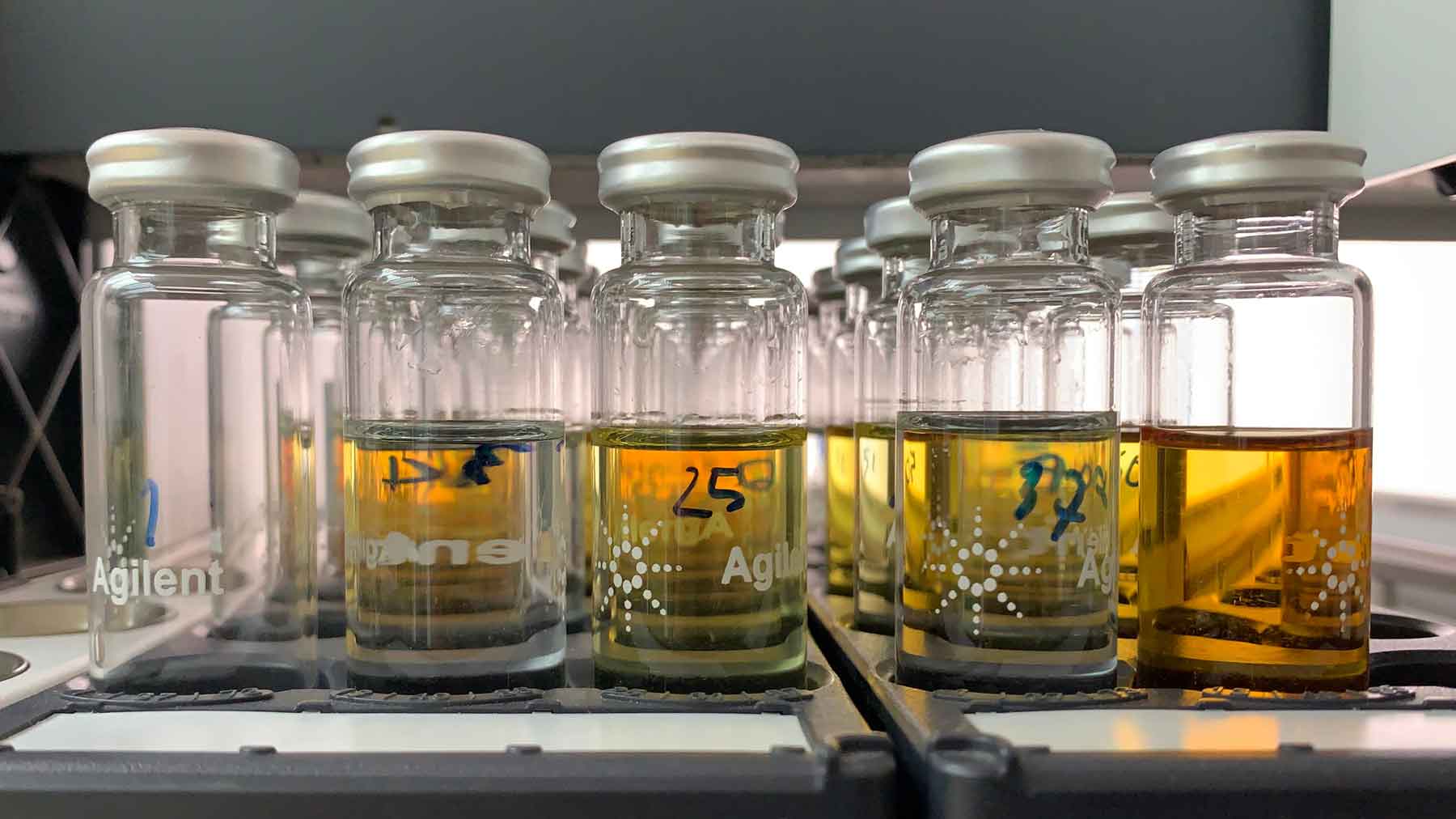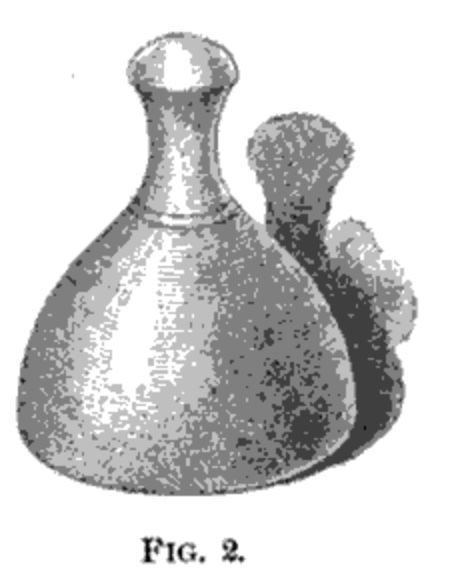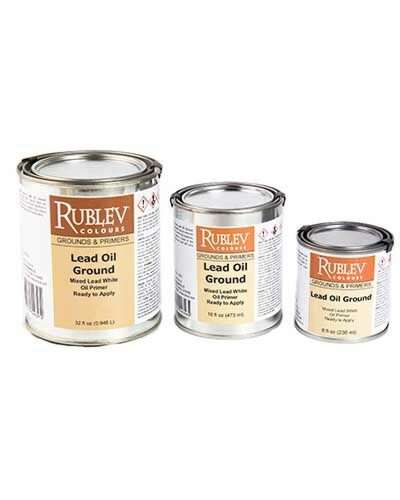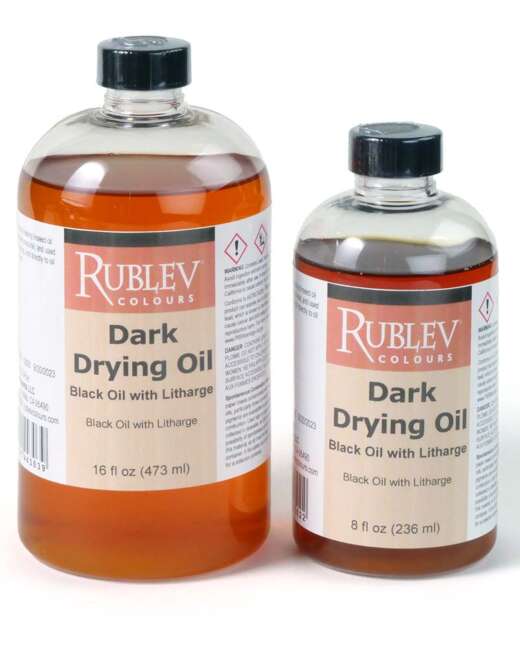
An interesting reference in a manual regarding the drying properties of oil paint has some application to oil painters. Some of the information is outdated and inaccurate, yet it does provide an easy-to-understand explanation of drying properties. I have edited some of the content to make it more applicable to artists.

Three conditions are important in making paint: First, the paint must possess sufficient fluidity to be spread with a brush, and yet be viscous enough to adhere evenly to the surface, without running, when the surfaces are inclined or even vertical. Second, the applied paint must become hard. Third, after hardening, it must adhere firmly to the surface to which it has been applied. It has been proved that the hardening of oil paints is due to the absorption of the oxygen of the atmospheric air. Since drying oils harden, the hardening is plainly the effect of a primary cause, independent of the drier or pigment.
Experiments demonstrate that some pigments manifest, in some cases, a drying property found to exist, also, in certain metal salts. The painter interested in knowing, at least approximately, the length of time required for his work to dry, considers, therefore, all the causes of the drying process, since this process is assisted by several substances having, under certain circumstances, the property of drying paint. There is, moreover, this remarkable fact, that the resultant or sum of the drying powers of each of the substances, entering into the composition of the paint, cannot be reckoned by the sum of the drying powers of each individual substance. Thus, pure linseed oil, whose drying power is represented by 1.985, and oil, treated with manganese, by 4.719, possess, when mixed, an activity of 30.828. If there are substances increasing the drying properties of drying oils, there are, again, others that seem to retard it. Linseed oil, for instance, with one coat applied upon glass, required 17 days, while the same oil, mixed with antimony oxide, took 26 days to dry. In this case, the antimony oxide was an anti-oxidant. Linseed oil, mixed with antimony oxide, and applied upon a cloth painted with lead white, was dry after 14 days. The same oil, mixed with the stannous oxide arsenate, and applied upon the same cloth, was not hard after 60 days. Oak wood appears to possess the anti-oxidant properties to a high degree, since, in an experiment during the month of December, three coats of oil took 159 days to dry, while in an experiment during May, a first coat of linseed oil was not dry on the surface till after 32 days. Poplar seems to be less anti-drying than oak, and Norway fir less than poplar. In the experiment for May, just referred to, three coats of linseed oil, on Norway fir, took 23 days to dry.
If, in certain substances, there is a drying activity, and in others a contrary force, there are, no doubt, circumstances under which linseed oil is uninfluenced by the nature of the surface on which it may be spread. For instance, in the experiments alluded to, one coat of linseed oil was laid upon the surfaces of copper, brass, iron, porcelain, and glass, and the oil was, in every case, dry after 48 hours. A substance may be drying or anti-drying, under different circumstances, attributable to the temperature, the presence or the absence of some other substance, etc. Metallic lead, for instance, well known as possessing drying qualities, is anti-drying in respect to linseed oil applied upon metallic leaf. Painters, desirous of thoroughly understanding the nature of their work, must consider the drying of their paint after the manner just pointed out. By so doing, and, in certain cases, fully examining results, differing one from the other, they are enabled to modify and improve ordinary methods. Linseed oil is naturally drying, and this property always increases by its admixture with lead white and, in certain cases, with zinc oxide. If this mixture is not sufficiently drying, recourse is to be had to an addition of oil, boiled with litharge or manganese. It is, at the same time, necessary to consider the nature of the surface painted over, whether it be a first, second, or third coat; also, the temperature of the air, the light, etc.
Drying oil, boiled with litharge or manganese, loses, from our present point of view, some of its value, because it may be dispensed with in the second and third coats and even in the first, when natural drying is aided by the temperature. Pigments themselves may, moreover, act as substitutes for it, as in the case of light colors, which are altered by browns or yellows. Linseed oil, exposed to air and light, becomes drying and loses its color, and may, therefore, be employed with lead white or zinc white, without impairing the whiteness of either. The association of oxide of zinc with carbonate of zinc, making it possible to dispense with a drier, presents a ready way of avoiding the inconvenience of colored driers. This circumstance also indicates that new combinations of colorless substances may be found, presenting great advantages. Experiments fully explain the function of linseed oil, or, more generally speaking, of drying oil in painting. Indeed, when oleic acid is mixed with metallic oxide, which may solidify it, it passes instantaneously from the liquid to the solid state, and there is no uniformity in the ensemble of the molecules of the oleate. The effect is different, when a drying oil, absorbing oxygen, passes progressively to the solid state; the slowness with which the change takes place allows of the symmetrical arrangement of the oily molecules, which would, were it not for the opaque molecules between them, appear transparent. But if these opaque molecules do not predominate, the painting is glittering-even brilliant, because of the lights being reflected by the dry oil as by a mirror.

Reference
A Treatise On Architecture And Building Construction, Vol 4: Plumbing And Gas-Fitting, Heating And Ventilation, Painting And Decorating Estimating And Calculating Quantities, The Colliery Engineer Co. p. 117, 118.












